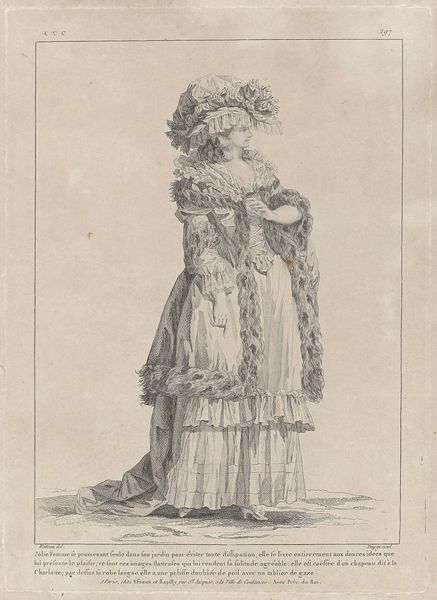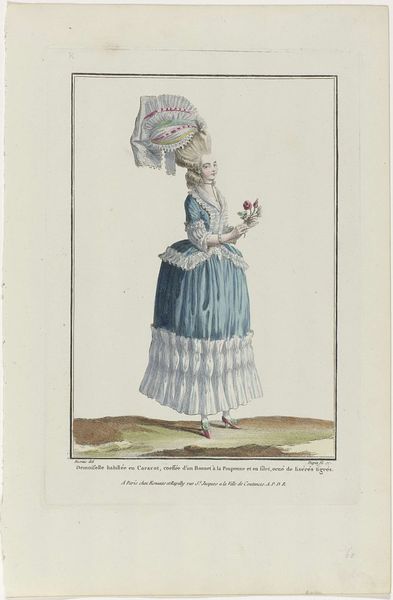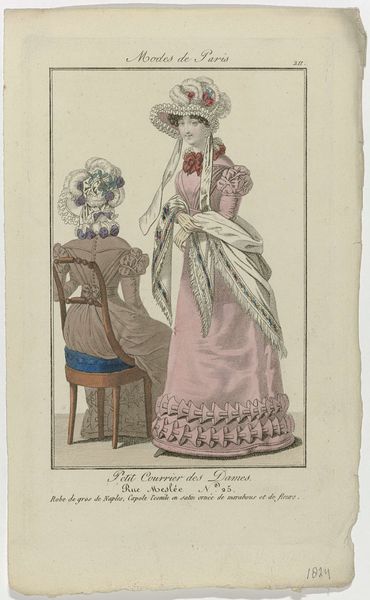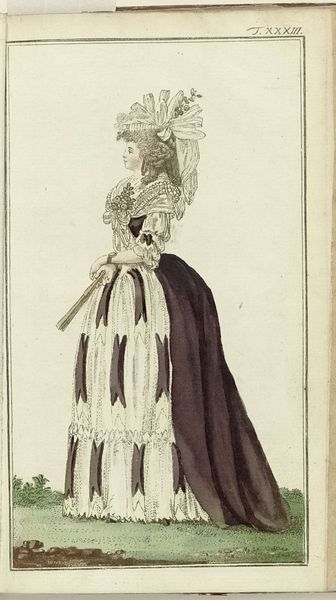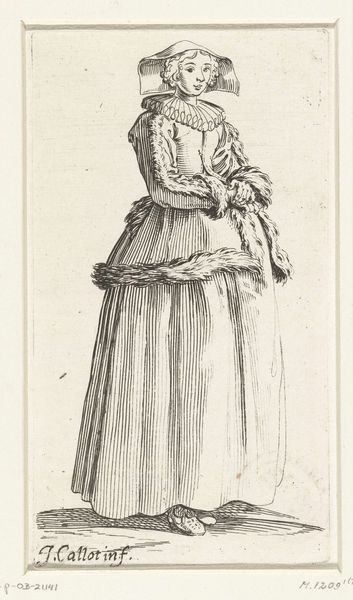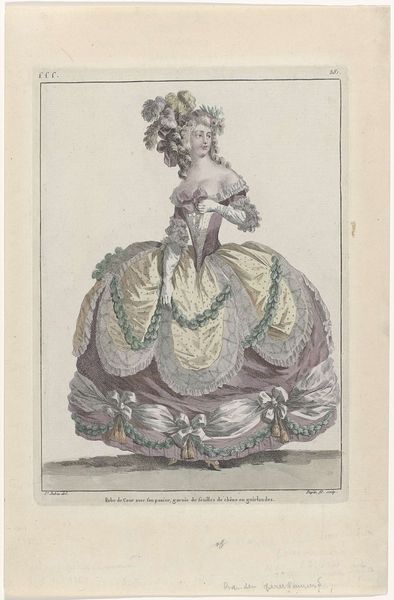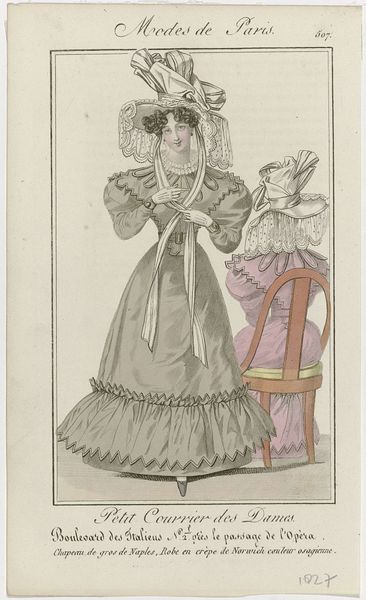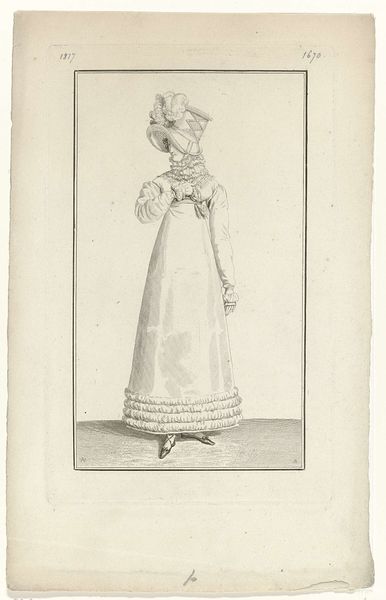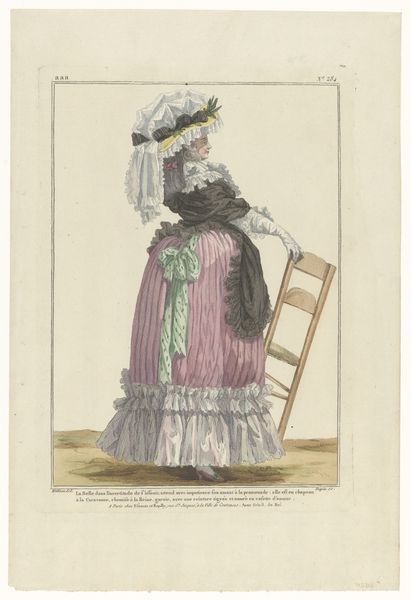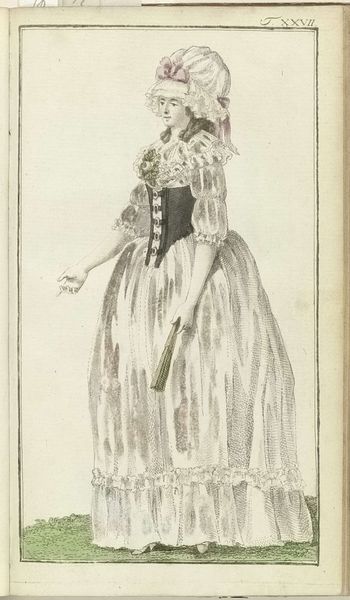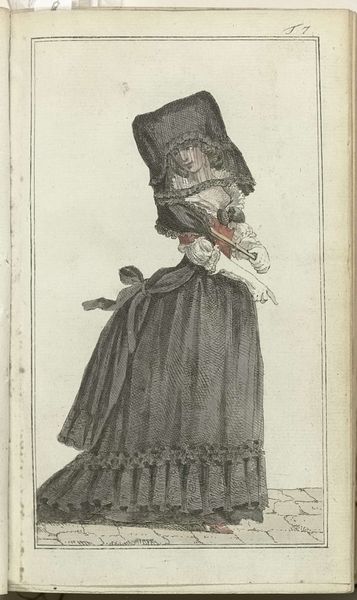
Dimensions: height 190 mm, width 130 mm
Copyright: Rijks Museum: Open Domain
Curator: Here we have "Marchande de Mode," created around 1786 and attributed to Laurent Guyot. It's currently held at the Rijksmuseum. The artwork is executed in pen, watercolor, and drawing. Editor: It strikes me as incredibly delicate. The lines are so fine, almost like lace themselves. The colour palette is muted, creating this sense of restrained elegance, yet there's such opulence in the details of her attire. Curator: Absolutely. Guyot was capturing a specific moment in French society. These "marchandes de mode," or fashion merchants, were becoming increasingly influential figures, shaping the tastes of the aristocracy and even Queen Marie Antoinette herself. Their workshops became cultural hubs. Editor: Thinking about her labor, this fashion merchant is using the tools and materials of the period. How the clothes themselves are constructed – the layering, the fabrics – speaks to an industry that employed a great many people, often women, to create these incredibly elaborate fashions. Each frill and flounce signifies not just style but labour. Curator: Precisely. These images, like this drawing, often had a public role as marketing tools. "Marchande de Mode" gives us a snapshot into a specific commercial environment and highlights how imagery shapes consumption habits of the elites. Editor: Yes! It prompts you to think of her workshop and the hands that helped to create this intricate fashion – she’s just one part of a larger web. The artwork then isn't just an individual likeness; it is a form of document related to making of these clothes and all the raw materials such as lace and the pen and watercolor themselves. Curator: It shows us how fashion became increasingly politicized, linked to court life and perceptions of extravagance, and the growing dissatisfaction with the Ancien Régime, right on the cusp of the French Revolution. It also illuminates how drawings, as relatively inexpensive forms of media, enabled such social commentary. Editor: It really drives home the sheer material excess of the era and highlights how a whole society labored, produced, and consumed. Curator: Looking at this image allows us to delve into a pivotal moment in French history. Editor: Exactly. The way it was crafted connects us with that moment—with the materials and hands that contributed to it.
Comments
No comments
Be the first to comment and join the conversation on the ultimate creative platform.
